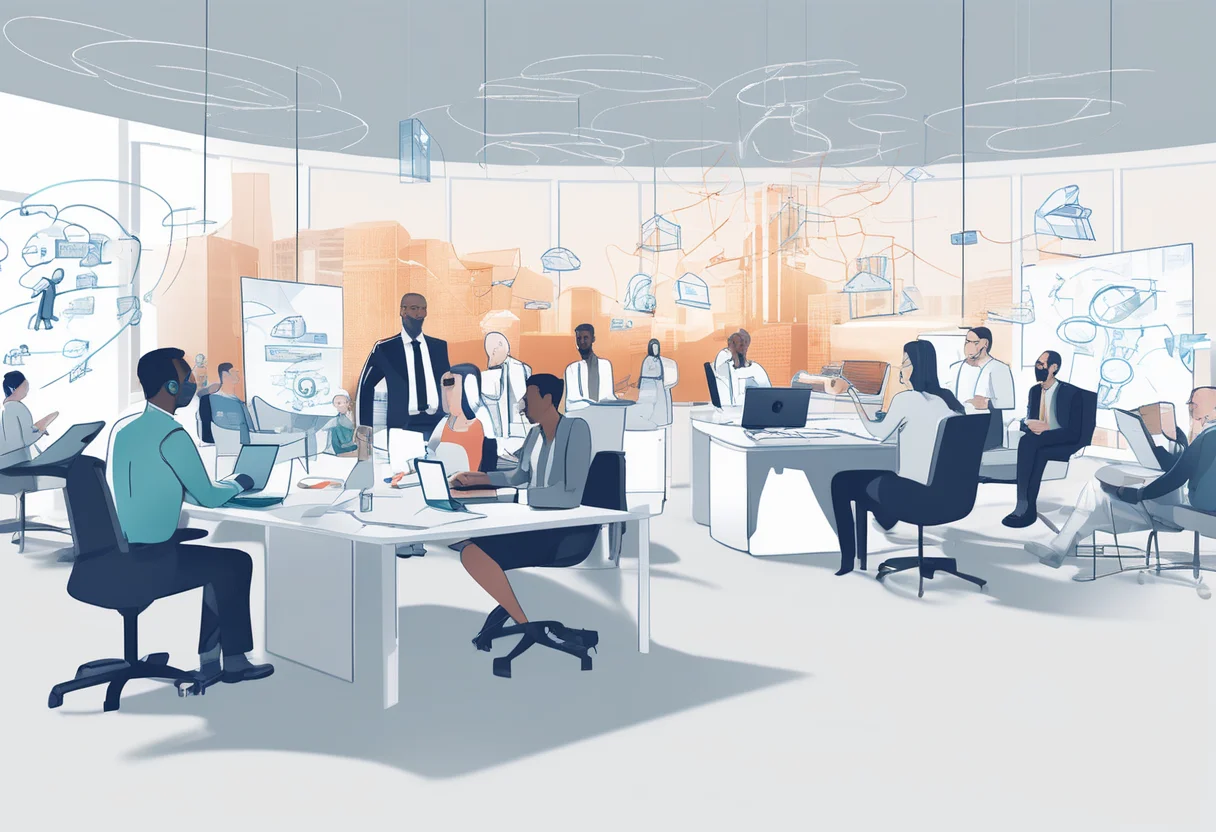
In the fast-changing world of business, helping employees grow is more important than ever. Did you know that when companies focus on employee development, their productivity can jump by 24%? As we look ahead to 2025, it's key to figure out what will help employees grow and develop. We'll talk about ways to empower your team and how new tech can help secure future growth. Plus, we'll look at how boosting diversity, equity, and inclusion can create a thriving workplace. Let's explore these strategies together and get ready to lead your organization toward success!
Summary: This article describes key organizational priorities for employee growth in 2025, focusing on specific tactics, advanced technologies integration, and enhancing diversity, equity, and inclusion. It includes a FAQ section to address common questions on growth strategies.
Key Employee Growth Strategies for 2025
Flexible Work Arrangements for Employee Satisfaction
The workplace landscape is evolving rapidly, and flexibility has become essential for maintaining employee satisfaction and productivity. Companies are increasingly adopting flexible work arrangements, such as hybrid and remote work models, to align with employee preferences and enhance efficiency. According to a SHRM report, these flexible models not only retain employees but also contribute to their happiness, alongside competitive pay and benefits. However, as Chronus highlights, balancing personal growth with universally applicable solutions in flexible settings can be challenging.
For instance, a major retail chain introduced a career development program featuring remote micro-learning modules. This initiative exemplifies how companies can integrate flexibility with personal growth, aligning it with broader business strategies.
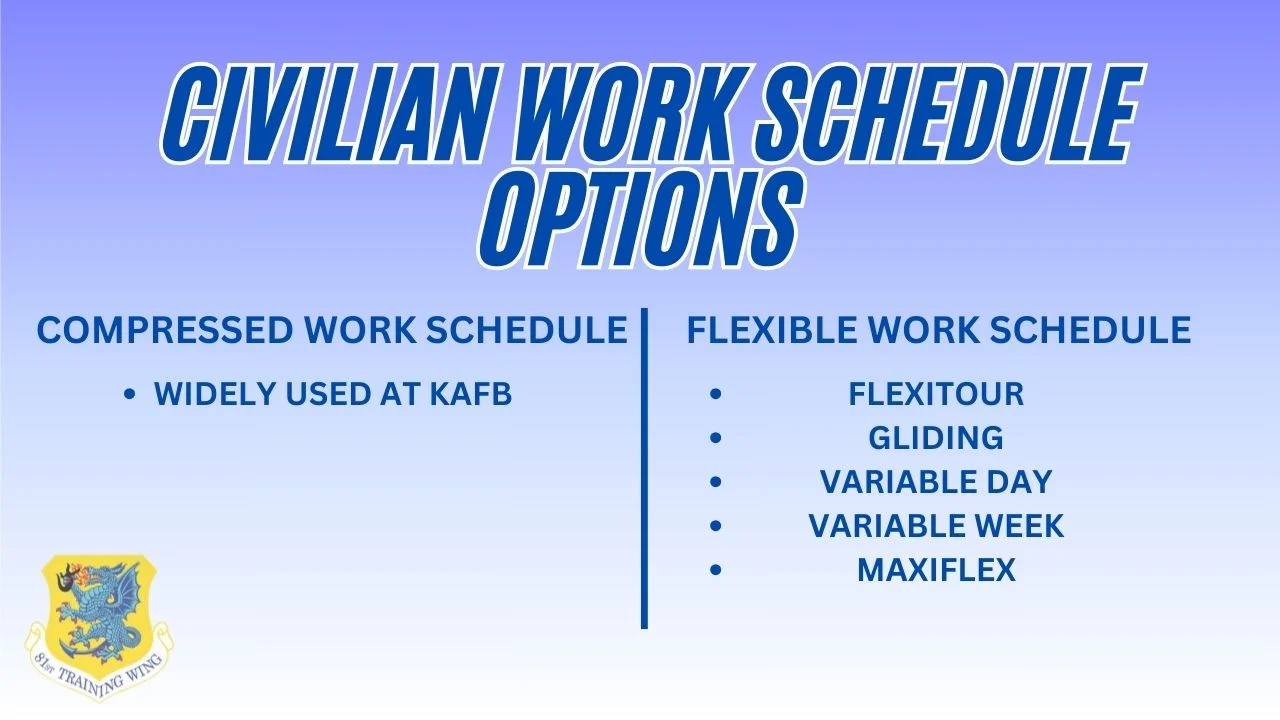
Enhancing Employee Well-being and Mental Health
Focusing on employee health and well-being has become a critical priority for companies aiming to attract and retain talent. The World Economic Forum reports that 64% of employers consider this a top concern. Leadership programs increasingly emphasize nurturing leaders who prioritize mental health and support their teams, as detailed in the SHRM research report.
Investing in employee well-being is directly linked to reduced turnover and increased satisfaction and engagement, according to HeartCount. Deloitte University, for example, focuses on developing skills such as social intelligence and resilience, equipping employees to manage change and promote mental health.
Cultivating a Strong Company Culture
A robust company culture is vital for organizational success. Nearly half of CHROs prioritize effective change management to foster a supportive culture, as reported by SHRM. Companies emphasize connection and purpose as integral components of a vibrant culture, as discussed by Chronus.
By 2025, performance strategies will focus on clarity, alignment, and growth opportunities. These strategies enhance culture and employee engagement, according to a Workday blog. A global manufacturing firm illustrates this by collaborating with universities to develop talent pipelines aligned with company objectives, fostering a culture of learning and innovation.
In summary, emphasizing work flexibility, employee well-being, and a strong company culture enables organizations to support growth and achieve success. These strategies, including personal growth programs, empathetic leadership, change management, and performance plans, align with the evolving needs of the workplace. As businesses navigate the challenges and opportunities of 2025, these priorities will be crucial for maintaining competitiveness and cultivating a thriving workforce.
Effective Employee Growth Strategies for 2025
Skills Gap Analysis and Strategic Upskilling
Identifying the skills your team needs but doesn’t yet possess is the first step in fostering their growth. This analysis highlights the missing skills necessary to achieve your company goals, allowing you to concentrate your training efforts where they matter most. With this information, you can design training programs that align with both personal and organizational objectives.
Upskilling is crucial as it provides employees with the opportunity to learn new things or prepare for different roles, keeping them sharp and in demand.
Effective Upskilling Methods:
- Job Shadowing and Rotation: Enables employees to experience different roles, broadening their skills and understanding of operations. This not only enhances their skills but also increases their adaptability.

- Microlearning: Breaks training into bite-sized pieces, making it easier to fit into tight schedules and aiding in retention of learned material.
Monitoring progress with regular feedback and evaluation during skills analysis and training is essential to ensure everything is on track.
Personalized Learning and Development Strategies
Tailoring learning experiences is vital for maintaining employee engagement and effectiveness. Individual Development Plans (IDPs) are personalized plans that employees create with their managers to set career goals and identify necessary skills or training. These plans align personal strengths and career aspirations with company needs, enhancing engagement and effectiveness.
Diverse Learning Options:
- Online courses
- Workshops
- Mentoring
- Digital learning
By linking personal goals with company objectives, you can motivate employees by demonstrating how their growth contributes to the company’s success. Incorporating learning goals into performance reviews also encourages continuous learning and development, fostering a culture of growth.
Mentorship and Coaching for Employee Development
Mentorship and coaching are excellent strategies to support employee growth, providing personal guidance and support. Mentorship pairs newer employees with experienced ones for advice and knowledge sharing, aiding in their growth and adaptation. Training mentors to guide effectively enhances the quality and impact of these programs.
Benefits of Peer Coaching:
- Encourages collaborative problem-solving and sharing of best practices
- Builds a sense of community and responsibility among employees
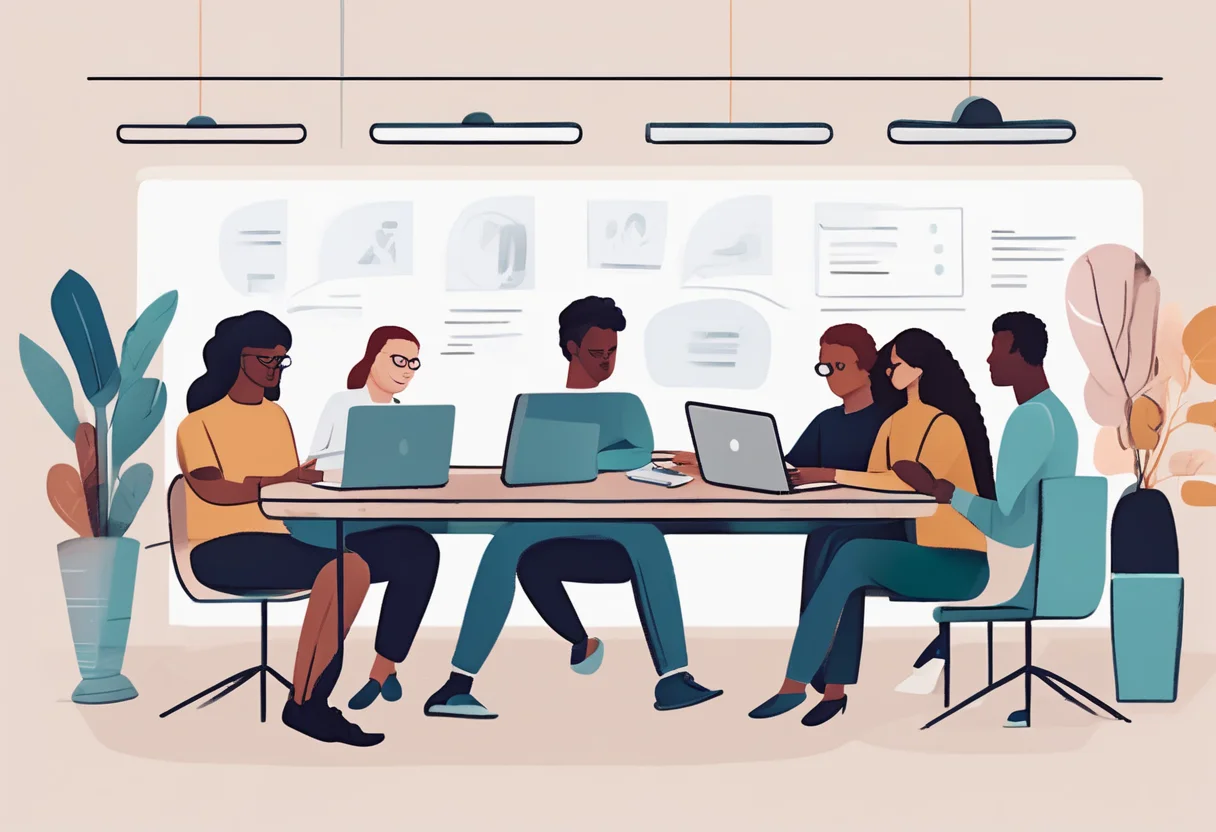
These programs help retain valuable knowledge within the company and boost the confidence of those being mentored. Starting with pilot programs for mentorship allows for fine-tuning and effective expansion of these initiatives.
Establishing a support system with mentoring, coaching, and one-on-one sessions enables employees to express concerns and receive guidance. This creates a supportive work environment where employees feel valued and empowered, encouraging open communication and teamwork, leading to a more engaged and productive team.
For more tips on employee growth strategies, explore resources like AIHR that provide detailed methods and examples.
Integrating Advanced Technologies for Future-Proofing Growth
Leveraging AI for Employee Growth Strategies
The integration of AI and emerging technologies into employee growth plans is revolutionizing how companies enhance their teams' skills. AI-powered tools enable personalized employee development by establishing clear career paths tailored to individual capabilities, motivations, and goals. This personalized approach facilitates more effective growth discussions between employees and managers, ensuring alignment with company objectives.

AI also assists in strategic planning by predicting talent needs, identifying skill gaps, and directing training efforts. With advanced analytics and AI, matching the right people to the right jobs becomes more seamless, expediting the hiring process and enhancing the candidate experience.
Increasingly, HR departments are adopting digital tools and AI for hiring, training, and performance reviews. These tools provide employees with tailored experiences and deeper insights. AI-backed hiring models emphasize skills, thereby broadening talent pools, reducing hiring time, and enhancing internal training. This approach is beneficial in addressing skill gaps in areas such as cloud and digital technologies. For example, a global telecom company utilized AI to identify essential skills for 5G. Instead of hiring new personnel, they trained existing staff, effectively bridging skill gaps in a competitive market.
Embedding Employee Development in Daily Workflows
Incorporating development into daily work routines fosters continuous employee growth. Platforms that integrate with everyday tasks offer personalized development by consistently highlighting opportunities beyond periodic reviews. Tools that visualize career paths and pose reflective questions help create growth plans aligned with both personal and company objectives.
Features that support action planning, including steps, deadlines, and progress checks, transform development goals into tangible achievements. Digital HR transformations consolidate disparate systems into a unified platform with self-service options, enhancing efficiency, reducing costs, and empowering employees. Incorporating digital coaching and skills assessments into performance discussions supports ongoing learning and development as part of daily routines. For instance, a media company established a digital transformation team and launched an HR platform that leverages training data to connect employees with appropriate programs, promoting peer learning and continuous development in everyday work.
According to Gartner, 90% of companies consider technology crucial for driving growth initiatives. Deloitte reports that 74% of businesses view digital HR and workforce tools as essential for transformation.
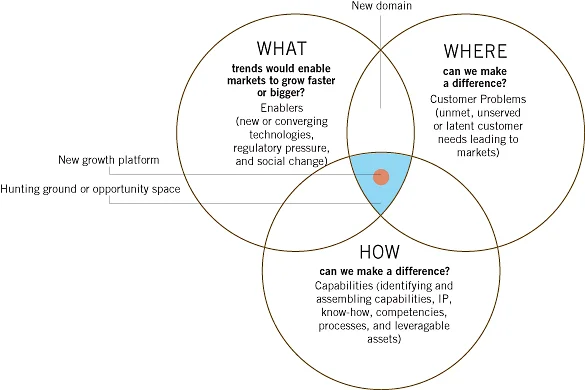
Enhancing Diversity, Equity, and Inclusion in Employee Growth Strategies
Implementing Diversity and Inclusion for Employee Growth
To make diversity and inclusion a reality, organizations can set up Employee Resource Groups (ERGs). These groups are instrumental in:
- Helping employees with similar backgrounds connect and support each other.
- Building community and fostering learning.
- Encouraging personal and organizational growth.

Regular diversity training is also key. It aids employees in understanding unconscious biases, boosts empathy, and equips teams with tools to create inclusive workplaces, thereby supporting employee growth and unity.
Encouraging cross-functional collaboration through mentorship and networking can:
- Break down barriers.
- Promote learning among diverse team members.
Providing platforms for diverse employees to share insights and lead discussions, such as webinars or company retreats, can inspire inclusive leadership. Additionally, designing inclusive physical workspaces with features like ADA-compliant ramps and single-use bathrooms ensures everyone feels safe and comfortable.
Ongoing DEIB training on topics like unconscious bias and inclusive language keeps the conversation active and fosters real change at all levels. Equity-centered coaching, focusing on understanding power dynamics and privilege, helps develop leaders who can uphold equity work within the organization.
Co-Creating Employee Growth Plans
Ensuring everyone has a fair shot at professional development involves:
- Offering clear promotion paths and leadership programs that identify talent from all backgrounds.
- Providing self-paced training for career growth.
- Integrating mentorship programs into performance management, pairing newer employees with experienced mentors.
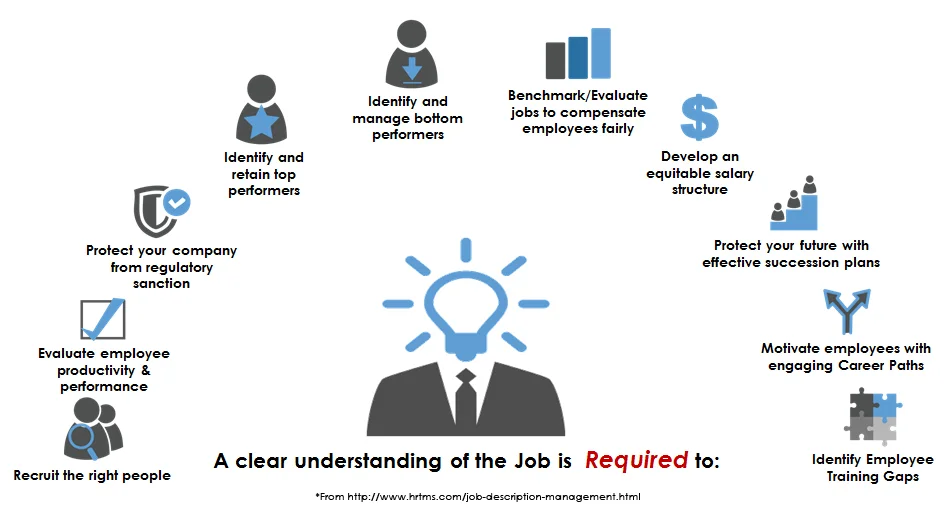
Using employee feedback in growth plans customizes development efforts to meet diverse needs, boosting engagement and inclusivity. Focusing on workforce development with training on cultural competency and inclusive leadership builds empathy and aligns with long-term business goals.
ERGs can also serve as platforms for leadership roles and mentorship, supporting growth within diverse communities. Companies that embrace DEI values in HR are 8.2 times more likely to retain and engage customers, demonstrating the tangible impact of DEI on retention and engagement.
By creating mentorship programs involving leadership and cross-departmental shadowing, organizations can promote diversity and inclusion in employee growth and retention, ensuring fairness and transparency in promotions and pay processes.
FAQ Section
Implementing Flexible Work Arrangements for Employee Growth
To make flexible work arrangements successful, companies need to establish clear policies and guidelines. These should specify:
- Eligibility: Who can participate?
- Expectations: What is expected from employees?
- Communication: How should team communication occur?
Utilizing technology such as video conferencing and project management software is crucial. These tools help maintain connectivity and productivity among dispersed teams.
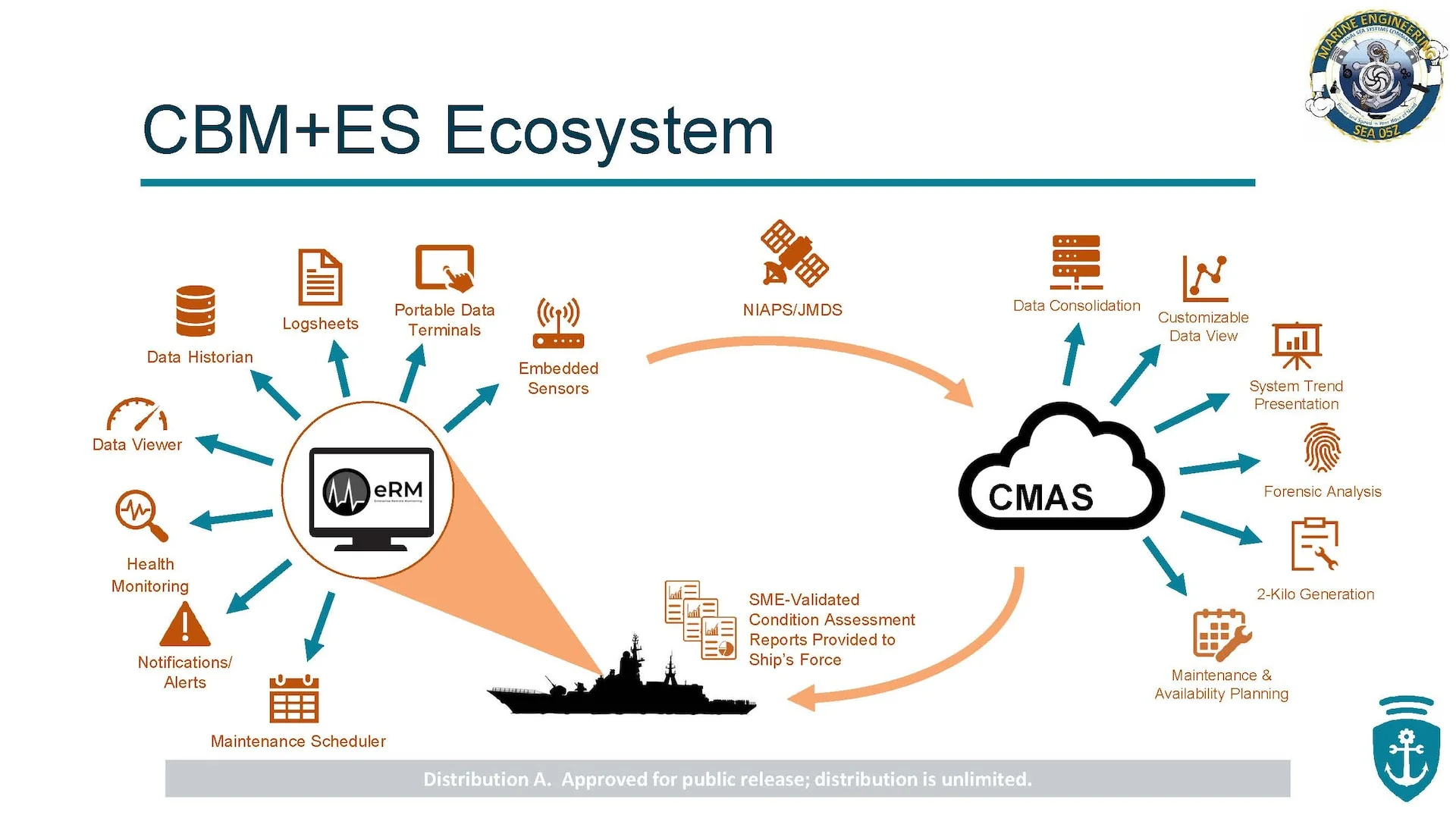
Additionally, training managers to lead remote teams and assess their performance is essential. Regularly gathering employee feedback allows companies to tailor work options to meet both individual and team needs, balancing freedom and responsibility. For instance, a company might experiment with a hybrid work model that includes core hours for collaboration while allowing employees to choose their work location, supported by manager training in remote leadership.
Prioritizing Employee Well-Being for Growth and Productivity
Focusing on employee well-being involves implementing wellness programs that address physical, mental, and emotional health. This could include:
- Stress Management Resources: Access to counseling and stress management tools.
- Work-Life Balance: Promoting balance through flexible schedules and regular breaks to prevent burnout.
- Supportive Work Culture: Training leaders to recognize distress and provide empathetic support.
Encouraging participation in wellness activities and offering learning opportunities fosters personal growth.

A company might offer virtual mindfulness sessions, flexible hours, and confidential mental health support, while training managers to actively support their team's well-being.
Tailoring Career Development Programs to Individual Employee Needs
Organizations can personalize career development programs by creating Individual Development Plans (IDPs) with employees and managers. These plans should:
- Set Career Goals: Define specific career objectives.
- Identify Skill Gaps: Recognize areas for improvement.
Providing diverse learning options such as online courses, mentorship, job rotations, and coaching caters to various learning styles and career paths. Aligning employee aspirations with company goals creates meaningful development pathways that keep employees motivated. Regular feedback and check-ins help track progress, adjust plans, and celebrate achievements. Upskilling and reskilling initiatives prepare employees for new roles and future demands. A company might initiate a mentorship program pairing employees with senior leaders, offer personalized learning playlists online, and conduct quarterly development reviews to keep career goals on track.
Embedding URLs
-
Setting clear policies and guidelines for flexible work is key to success (source: AIHR Blog).
-
Using tech for remote work, like video conferencing tools, boosts productivity (source: ACI Learning).
-
Training managers to lead remote teams is crucial (source: Beqom).
-
Regular employee feedback helps tailor flexible work effectively (source: ACI Learning).
-
Integrating wellness programs for health, including stress management, is important (source: University of Scranton).
-
Promoting work-life balance with flexible schedules reduces burnout (source: ACI Learning).
-
Training leaders to offer empathetic support builds a supportive culture (source: University of Scranton).
-
Creating IDPs with employees and managers is a key strategy (source: AIHR Blog).
-
Offering diverse learning opportunities suits different learning styles (source: Beqom).
-
Aligning employee goals with company goals creates meaningful pathways (source: Harvard Business School).